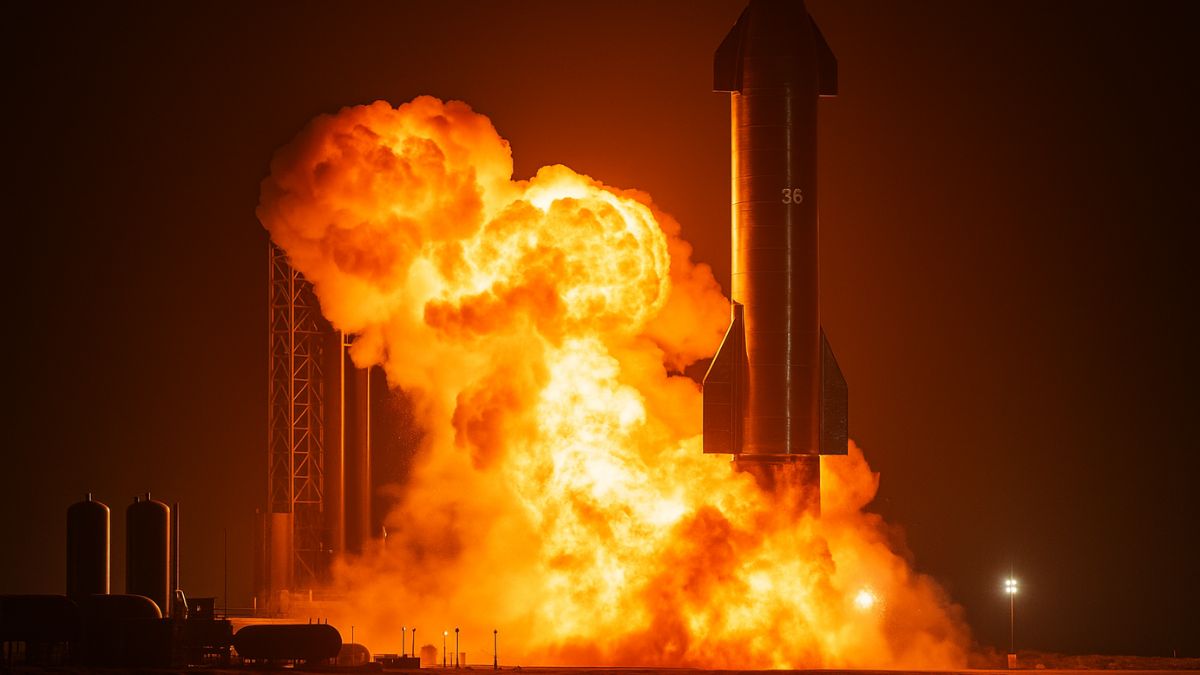New York: When the skies over southern Texas lit up on June 18, 2025, it wasn’t a meteor—it was SpaceX’s Starship 36 engulfed in a fiery explosion at the company’s iconic Starbase facility. What was supposed to be a routine static-fire test turned into a major incident that startled nearby residents, made global headlines, and reignited conversations about the risks of rapid rocket innovation.
For many in Cameron County, the thunderous boom felt personal. Residents living just miles from Starbase have become accustomed to the tremble of test launches and static fires—but this one felt different. Stronger. Louder. And scarier. Windows shook, dogs barked for hours, and the night air reeked faintly of scorched fuel and burnt metal.
The incident marks yet another dramatic moment in SpaceX’s Starship journey—a saga of explosive highs and sobering setbacks. But this wasn’t just about engineering. It was about trust, progress, and what happens when dreams collide with the laws of physics in plain view of the people living next door.
Also Read: SpaceX Starship Flight 9 Launch: Date, Time, Live Stream & Mission Details
What caused the Starship 36 explosion?
According to early reports from the Brownsville Fire Department and SpaceX insiders, the explosion occurred just after 11 p.m. during a static-fire test—a procedure where engines are fired while the rocket remains anchored to the ground. These tests are meant to verify engine performance before actual launches.
But something went wrong.
Preliminary footage and eyewitness accounts suggest that an anomaly occurred during the fueling phase, causing a rupture near the engine bay. The result: an instant fireball that consumed the lower half of Starship 36 and sent debris flying. SpaceX’s automated safety protocols kicked in immediately, and no injuries were reported—an outcome that underscores the importance of strict test site clearance.
Still, residents reported feeling the blast from several miles away, and emergency responders were dispatched to monitor air quality and assess damage around the facility.
On Wednesday, June 18 at approximately 11 p.m. CT, the Starship preparing for the tenth flight test experienced a major anomaly while on a test stand at Starbase. A safety clear area around the site was maintained throughout the operation and all personnel are safe and accounted…
— SpaceX (@SpaceX) June 19, 2025
Why SpaceX keeps testing—despite the explosions
If you’ve followed SpaceX’s Starship program, you know this isn’t the first time a test vehicle met a fiery end. In fact, Starship prototypes—including SN9, SN11, and Flight 9—have previously exploded mid-air or upon landing. But that’s by design.
Elon Musk’s strategy is simple but bold: “Fail fast, fix faster.” Every test, no matter how fiery, teaches engineers what not to do next time. Unlike traditional aerospace giants that favor slow and cautious builds, SpaceX pushes boundaries through rapid iteration. Starship isn’t just a rocket—it’s a learning machine.
But that learning comes with real-world stakes: residents’ safety, environmental impacts, and public perception. And while regulators have generally given SpaceX wide operational latitude, repeated explosions could eventually trigger tighter scrutiny.
What this means for Starbase and local communities
Starbase is more than a launchpad—it’s an entire town built around space exploration. SpaceX employees live, work, and test here. The town of Boca Chica and other parts of Cameron County have experienced both the economic boom and existential unease that come with hosting rocket launches in their backyard.
This explosion brought those tensions back into the spotlight.
Residents are now asking:
- How much risk is acceptable in the name of innovation?
- Should there be stricter limits on night testing?
- And who’s responsible if the next explosion does more than rattle windows?
Local officials are working closely with SpaceX and federal agencies to ensure safety, but the emotional toll on nearby families remains a very real part of the story.
What’s next for Starship 36 and SpaceX?
SpaceX has confirmed that an internal review is underway, and the company will analyze telemetry data, structural fragments, and video footage to determine exactly what failed.
Meanwhile, the next integrated flight test (IFT-10), which was scheduled for July, is likely delayed. Engineers will need to recheck systems, evaluate ground infrastructure damage, and possibly rebuild significant parts of the testing platform.
But if history is any guide, SpaceX will move fast. Within weeks, we may see Starship 37 or 38 rolled out, ready to try again.
Why this matters—beyond rockets and fireballs
Starship is central to Elon Musk’s vision for humanity’s future. It’s the rocket designed to carry people to Mars, launch space tourism, and replace Falcon 9 as SpaceX’s workhorse. It’s also the rocket NASA is counting on for future Artemis missions to the Moon.
So when Starship explodes, it’s not just about fuel tanks or engine bells—it’s about the timeline for human exploration, the confidence of government contracts, and the cultural narrative around spaceflight itself.
For young Americans growing up in an era of tech leaps and climate dread, watching Starship rise—and sometimes fall—represents something profound: a chance to believe that bold, impossible things are still worth trying.







